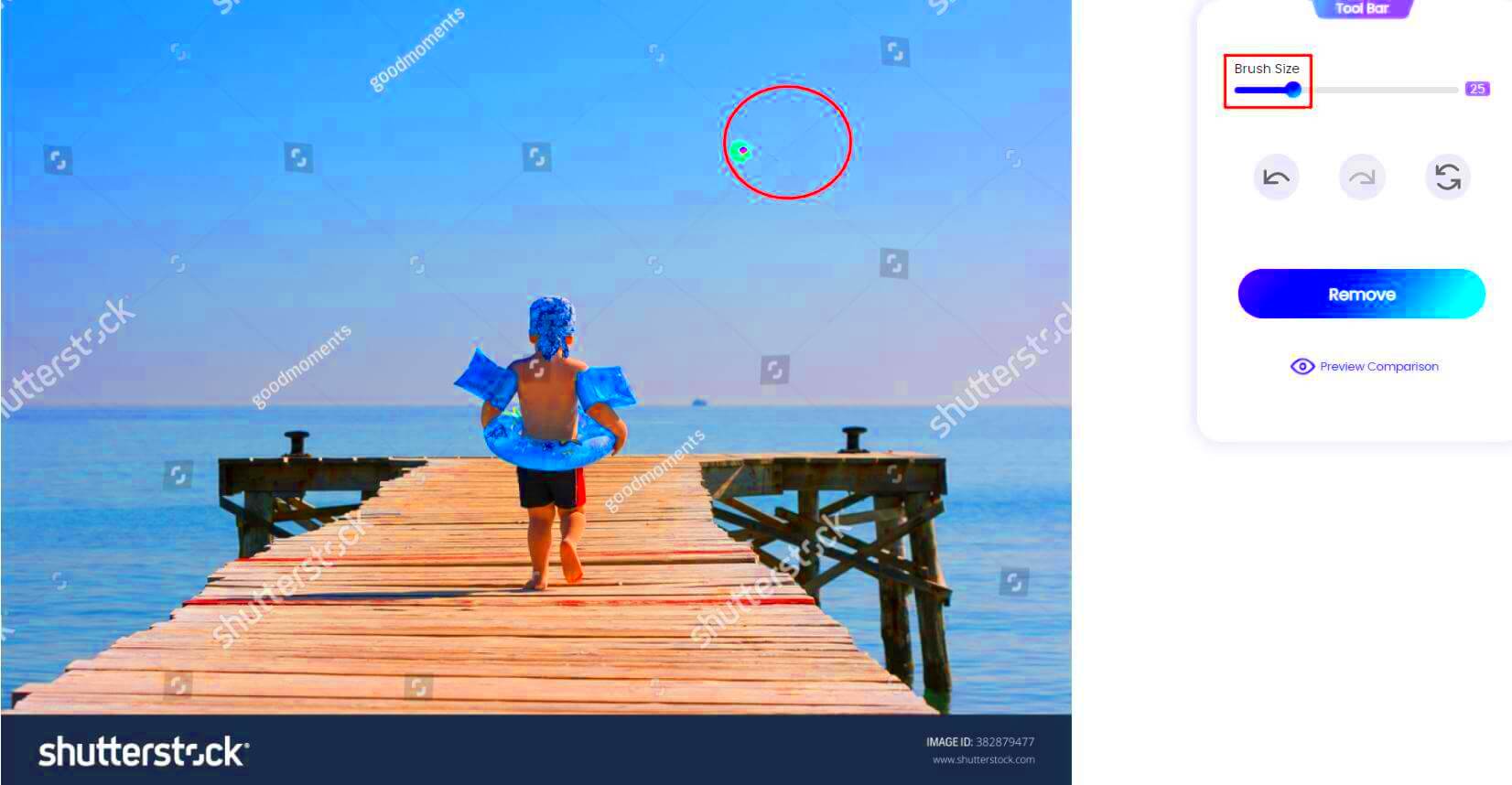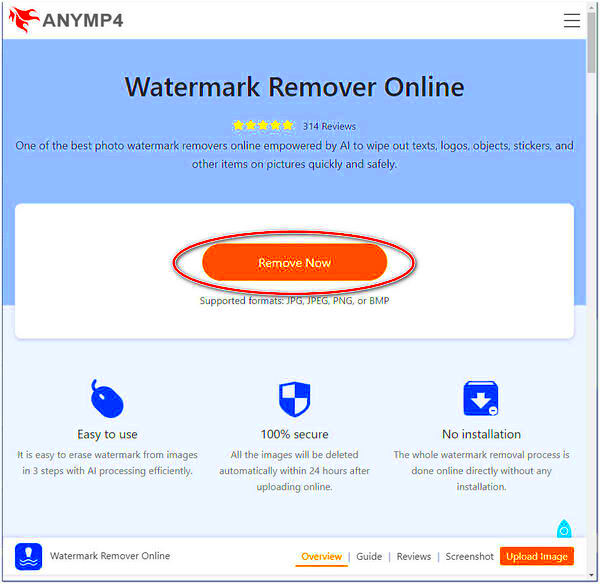A watermark is a means of protecting
stock photographs from misuse on the internet. It aids in safeguarding one’s interest as far as the use of such pictures on the internet is concerned . Every time I think about that initial time I saw an amazing stock image, I cringe because of its bold covering logo . In any case, this experience revealed to me the value of these symbols for they do not only identify their authors but also keep them away from unapproved usages.
Watermarks are critical for:- Protecting Intellectual Property: They signify ownership and deter theft.
- Encouraging Licensing: By marking images, creators prompt users to purchase the right to use them.
- Promoting Brand Awareness: A subtle logo can also help with recognition.
Users can learn to appreciate the effort put into every photo through an understanding of its intention. Respect for artists’ rights and recognition that it is a reminder of the creative process.
Reasons for Removing Watermarks

When you see breathtaking pictures, you just might feel an urge to utilize them without their identity insignia. Nevertheless, it is important not to forget what could lead someone to want the removal of such a label. For example, during my first few weeks as a blogger I thought taking out a watermark is nothing serious. But then I did go through some rather rough experiences that made me realize otherwise.
Reasons that are usually common consist of:- Enhancing Aesthetic Appeal: Watermarks can distract from the visual impact of an image.
- Creating Professional Presentations: Clean images look more polished and trustworthy.
- Personal Projects: For non-commercial uses, some feel the watermark detracts from their creative vision.
Nonetheless, there is a need for aesthetics to be balanced with ethics. From my experience, I have realized that removing watermarks without consent carries dire consequences.
Legal Considerations When Using Shutterstock Images

The use of stock images has its own do's and don'ts. When I initially journeyed into stock photography back then, I didn’t know much about law. However, it took me receiving a copyright notice for me to truly comprehend the implications of licensing contracts.
Such are the important legal issues to think about:- License Types: Shutterstock offers various licenses, each with different usage rights. Familiarize yourself with the specific terms of the license you choose.
- Commercial vs. Editorial Use: Understand whether your project falls under commercial use, which requires a standard license, or editorial use, which may have more lenient terms.
- Unauthorized Use Consequences: Using an image without proper licensing can lead to legal action, fines, or having to remove your content. I once faced a hefty fee for using an image without realizing its licensing terms.
Let them be aware of the laws as it will safeguard and appreciate those who do creative work. It is a very valuable lesson for me and I hope others can learn from it.
Steps to Remove Watermarks from Images

Images that have watermarks can be really charming sometimes especially when you’re planning to use them in some project. I still remember my first confrontation with the issue. A lovely image caught my eye but the heavy watermark was just so terrible! In my case, I just had to learn about how to do it in a right way of doing things after compromising the whole piece of art through other methods on the internet.
For individuals who may be contemplating such a path, the following are the necessary procedures to take:- Evaluate the Image: Before anything else, determine whether the image is truly worth using without the watermark. Ask yourself if you can find a similar image legally.
- Seek Permission: The best way to use an image is by asking the owner for permission. A polite email can go a long way.
- Use Editing Software: If you have consent, tools like Photoshop or GIMP can help you carefully remove the watermark. Use the clone stamp or healing brush for a seamless look.
- Consider a Subscription: If you frequently use stock images, consider subscribing to a service that allows you to download images without watermarks legally.
Always keep in mind that taking off watermarks must not infringe anyone's rights. Surely, this should always be a consideration throughout your creative process.
Using Tools to Simplify the Process

In this epoch characterized by progress and science, multiple instruments exist for making work more efficient with photographs (Thornley). My image editing initiation relied on simple applications but advanced to significant tools that changed everything completely. If well harnessed, the proper device will help you at shortening the period set aside for alterations and improve their effectiveness greatly.
By the way, these are some commonly used instruments you may reflect on:- Photoshop: A powerful editing software that allows precise removal of watermarks. It requires some learning but is worth the investment.
- GIMP: A free alternative to Photoshop that offers a range of features for watermark removal.
- Inpaint: This user-friendly tool is specifically designed for removing unwanted objects from images, including watermarks.
- Online Services: Websites like Fotor and PicWish provide online editing tools to help you remove watermarks easily.
Although these tools can be really useful, always keep in mind to employ them in a just manner. The simplicity of getting should not override the consideration for originality owners.
Alternatives to Removing Watermarks
By caring about the rights of the creators instead of using such things as way watermark removal, we can access other options. I have also found out earlier during my journey as a content creator that one may not just try to remove watermarks. However, other than this, there are many alternatives which allow us to embrace one’s creativity and stay within the legal boundaries at all time.
Below are a few options we could ponder upon:- Purchase the Image: This is the most straightforward way to use a watermarked image legally. Most stock image sites offer reasonable pricing for high-quality images.
- Look for Free Alternatives: Websites like Unsplash and Pexels provide high-quality images that don’t require payment or watermark removal.
- Create Your Own Images: Why not try your hand at photography or design? It can be incredibly rewarding to use your images.
- Collaborate with Creators: Reach out to photographers and artists for partnerships. This way, you can access stunning visuals and support creators at the same time.
In addition to ensuring that you are ethical, considering other options may also help in creativity and teamwork for your assignment.
Best Practices for Using Stock Images
Incorporate Stock Photos in here carefully to improve your content. When I look back at the first article I wrote for my blog, all I remember is how thrilled I was when putting together some eye-catching pictures with which I thought would attract readers’ attention.However, it turned out to be true that selecting beautiful images was not enough; rather, one needs to know the right way to apply stock photos while taking note of the importance of legality and quality of their works involved in it.
In keeping with this, there are some recommendations that are best to note.- Choose High-Quality Images: Always select images that are clear and high resolution. Blurry or pixelated images can diminish your content’s impact.
- Understand Licensing: Familiarize yourself with the licensing terms of each image. Make sure you're compliant with usage rights to avoid legal issues.
- Give Credit Where It’s Due: Even when not required, crediting the creator is a good practice. It acknowledges their hard work and can foster goodwill.
- Be Mindful of Context: Ensure the images you choose align with your content’s message. For instance, using cheerful images for serious topics may confuse your audience.
- Keep It Consistent: Maintain a cohesive style across your images. This creates a more professional look and enhances your brand identity.
When you practice these traditions, your work improves and the artists whose images have been used are honored. It is the best of both worlds!
FAQ About Removing Watermarks from Shutterstock Images
Questions of watermark removal come often. I’ve been there too, mulling over how to exploit stock photos minus those bothersome watermarks. In my exploration I have summarized some frequently asked questions that would help you clear common misunderstanding.
The following are several significant questions that are frequently asked:Is it legal to remove watermarks?
- Generally, no. Watermarks indicate ownership, and removing them without permission can lead to legal issues.
Can I use a watermarked image for personal projects?
- Even for personal use, it’s best to respect the creator's rights and seek proper licensing.
What should I do if I mistakenly used an image without permission?
- Contact the image owner immediately and explain the situation. Often, they appreciate honesty and may allow you to rectify it.
Are there free alternatives to Shutterstock images?
- Absolutely! Websites like Pixabay and Unsplash provide free images that you can use without watermarks.
How can I find images that suit my needs?
- Use specific keywords related to your content and explore various categories on stock image sites.
To navigate the world of stock images with more confidence and creativity is to respect legal boundaries while still creating awesome content. Understanding these FAQs will help you know how to do this, as well as allow you avoid mistakes that may land you in trouble.
Conclusion on Handling Watermarked Images
As this discussion draws to an end, it should be kept in mind that use of stock photos especially watermarked stocks has certain responsibilities attached to them. For me, having had some experiences myself, respecting the rights of the creators is central to promoting a just and lively creative environment. We have addressed different measures one can take, practices and even ways out that will not only provide legal cover but also beautify your works.
- Always check licensing: It’s your best safeguard against legal troubles.
- Consider purchasing images: This supports artists and ensures you have the right to use their work.
- Explore free resources: There are plenty of platforms offering quality images without watermarks.
- Practice ethical usage: Respect for creators should guide your choices.
You protect yourself while also showing respect to the creative minds of others if you follow these principles. Now, let’s advance with respect and creativity in our hearts so that we do not step on anyone’s toes with our projects!
 When you see breathtaking pictures, you just might feel an urge to utilize them without their identity insignia. Nevertheless, it is important not to forget what could lead someone to want the removal of such a label. For example, during my first few weeks as a blogger I thought taking out a watermark is nothing serious. But then I did go through some rather rough experiences that made me realize otherwise.Reasons that are usually common consist of:
When you see breathtaking pictures, you just might feel an urge to utilize them without their identity insignia. Nevertheless, it is important not to forget what could lead someone to want the removal of such a label. For example, during my first few weeks as a blogger I thought taking out a watermark is nothing serious. But then I did go through some rather rough experiences that made me realize otherwise.Reasons that are usually common consist of: The use of stock images has its own do's and don'ts. When I initially journeyed into stock photography back then, I didn’t know much about law. However, it took me receiving a copyright notice for me to truly comprehend the implications of licensing contracts.Such are the important legal issues to think about:
The use of stock images has its own do's and don'ts. When I initially journeyed into stock photography back then, I didn’t know much about law. However, it took me receiving a copyright notice for me to truly comprehend the implications of licensing contracts.Such are the important legal issues to think about: Images that have watermarks can be really charming sometimes especially when you’re planning to use them in some project. I still remember my first confrontation with the issue. A lovely image caught my eye but the heavy watermark was just so terrible! In my case, I just had to learn about how to do it in a right way of doing things after compromising the whole piece of art through other methods on the internet.For individuals who may be contemplating such a path, the following are the necessary procedures to take:
Images that have watermarks can be really charming sometimes especially when you’re planning to use them in some project. I still remember my first confrontation with the issue. A lovely image caught my eye but the heavy watermark was just so terrible! In my case, I just had to learn about how to do it in a right way of doing things after compromising the whole piece of art through other methods on the internet.For individuals who may be contemplating such a path, the following are the necessary procedures to take: In this epoch characterized by progress and science, multiple instruments exist for making work more efficient with photographs (Thornley). My image editing initiation relied on simple applications but advanced to significant tools that changed everything completely. If well harnessed, the proper device will help you at shortening the period set aside for alterations and improve their effectiveness greatly.By the way, these are some commonly used instruments you may reflect on:
In this epoch characterized by progress and science, multiple instruments exist for making work more efficient with photographs (Thornley). My image editing initiation relied on simple applications but advanced to significant tools that changed everything completely. If well harnessed, the proper device will help you at shortening the period set aside for alterations and improve their effectiveness greatly.By the way, these are some commonly used instruments you may reflect on:
 admin
admin








